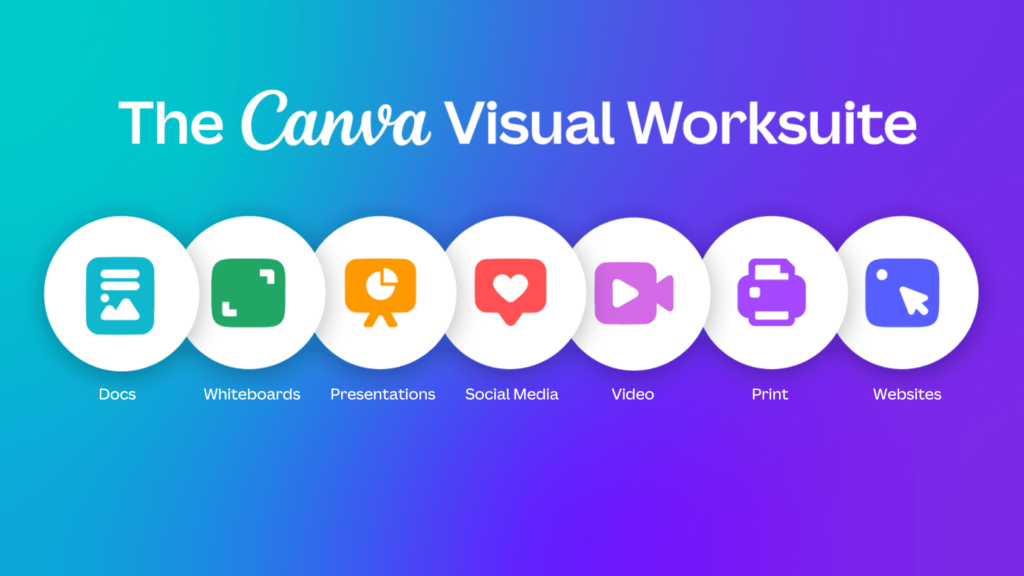Canva Design: Revolutionizing The Magic of Design and 7 Aspects of the Business Success.

Canva Design:
Canva design. In the ever-evolving landscape of technology and entrepreneurship, success stories often emerge from the fusion of innovation, user-centric design, and a relentless pursuit of excellence. One such remarkable tale is that of Canva, a graphic design platform that has not only transformed the way individuals and businesses approach design but has also become a beacon of success in the startup world.

Genesis of Canva:
Canva design’s journey began in 2012 when Melanie Perkins, Cliff Obrecht, and Cameron Adams founded the company in Sydney, Australia. Perkins, who had earlier co-founded a yearbook design business, recognized the challenges people faced in creating professional-looking designs without specialized skills or expensive software.
The trio envisioned a platform that would democratize design, making it accessible to anyone, regardless of their background or expertise. This vision became the driving force behind the design platform’s creation. The founders aimed to simplify the design process, allowing users to easily create stunning visuals for various purposes, from social media posts to business presentations.

Democratizing Design:
Its first breakthrough was its commitment to democratizing design. The platform offered a user-friendly interface with drag-and-drop functionality, enabling individuals with limited design skills to craft visually appealing content effortlessly. This inclusivity resonated with a wide audience, ranging from students and small businesses to established enterprises.
By providing access to a vast library of templates, images, and design elements, Canva design empowered users to unleash their creativity without the need for extensive training or hiring professional designers. This democratization of design played a pivotal role in its rapid growth and widespread adoption.

Strategic Partnerships:
The success of the design platform wasn’t solely built on its user-friendly interface; strategic partnerships played a crucial role in its ascent. The platform forged collaborations with industry giants like Adobe, Google, and Microsoft, seamlessly integrating its services with widely used applications. This interoperability expanded Canva design’s reach and made it an integral part of users’ workflow.
By aligning with established players in the tech and design space, Canva design enhanced its credibility and positioned itself as a versatile and reliable tool for a diverse range of users. These partnerships not only facilitated seamless user experiences but also contributed to Canva’s credibility in the competitive design software market.

Continuous Innovation:
Canva’s commitment to innovation has been a cornerstone of its success. The platform consistently introduces new features and updates to stay ahead of industry trends and cater to evolving user needs. From interactive presentations to animated social media graphics, Canva design keeps pushing the boundaries of what’s possible in design.
The introduction of Canva Pro, a subscription-based service offering additional features and premium assets, marked a strategic move to monetize the platform while providing enhanced value to its user base. This freemium model proved successful, generating a significant revenue stream for the company.

Scaling Globally:
Canva design’s success story extends beyond its Australian roots. The company embraced a global mindset early on, recognizing the importance of catering to a diverse international audience. Canva design’s platform and support for multiple languages allowed it to break down geographical barriers and become a go-to design tool worldwide.
A crucial aspect of Canva’s global strategy was its understanding of cultural nuances. The platform’s templates and design elements are curated to resonate with users from different regions, ensuring relevance and relatability. This cultural sensitivity has been instrumental in Canva’s ability to establish a strong presence in various markets.

Navigating Challenges:
While Canva design’s journey has been marked by triumphs, it hasn’t been without its share of challenges. Competition in the design software industry is fierce, with established players and newcomers vying for market share. Canva’s ability to navigate this competitive landscape can be attributed to its agility, adaptability, and a keen understanding of user needs.
The company has also faced occasional backlash, particularly concerning user data privacy and security concerns. Responding proactively to such issues, Canva design has implemented robust security measures and transparent communication to address user concerns and maintain trust.

Community Engagement:
A key factor in Canva’s success is its emphasis on building a vibrant and engaged community. The platform actively encourages user feedback, incorporates user suggestions into updates, and fosters a sense of belonging among its users. This community-centric approach not only enhances user loyalty but also fuels organic growth through word-of-mouth referrals.
Canva’s online Design School, featuring tutorials and resources for users to enhance their design skills, further strengthens its community engagement. By empowering users to improve their proficiency in design, Canva design ensures an invested and knowledgeable user base.

Financial Milestones:
Canva’s journey from a startup with a visionary idea to a global design powerhouse is also reflected in its financial milestones. The company’s valuation skyrocketed over the years, reaching unicorn status (a privately held startup valued at over $1 billion) and exceeding $6 billion in 2021. Canva’s ability to attract significant funding rounds demonstrates not only investor confidence but also the platform’s potential for sustained growth.
The company’s financial success has enabled it to reinvest in research and development, expanding its feature set and maintaining its competitive edge. Additionally, Canva’s strong financial position positions it well for future strategic moves, potential acquisitions, and continued global expansion.

Future Outlook:
As Canva continues to evolve and redefine the design landscape, its future outlook appears promising. The company’s commitment to innovation, user-centric design, and global accessibility positions it as a leader in the design software industry. With the ongoing integration of advanced technologies such as artificial intelligence and machine learning, Canva is likely to further enhance its capabilities and offer cutting-edge solutions to its users.
Canva’s success story serves as an inspiration for aspiring entrepreneurs and a testament to the transformative power of democratizing access to creative tools. The company’s journey from a startup in Sydney to a global design phenomenon highlights the importance of vision, adaptability, and a relentless pursuit of excellence in the dynamic world of technology and business.













